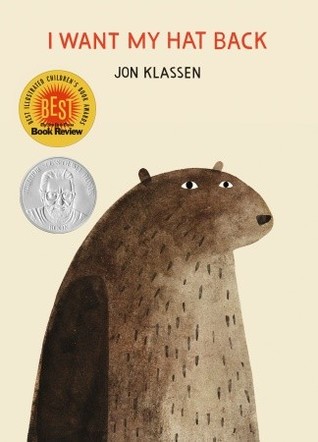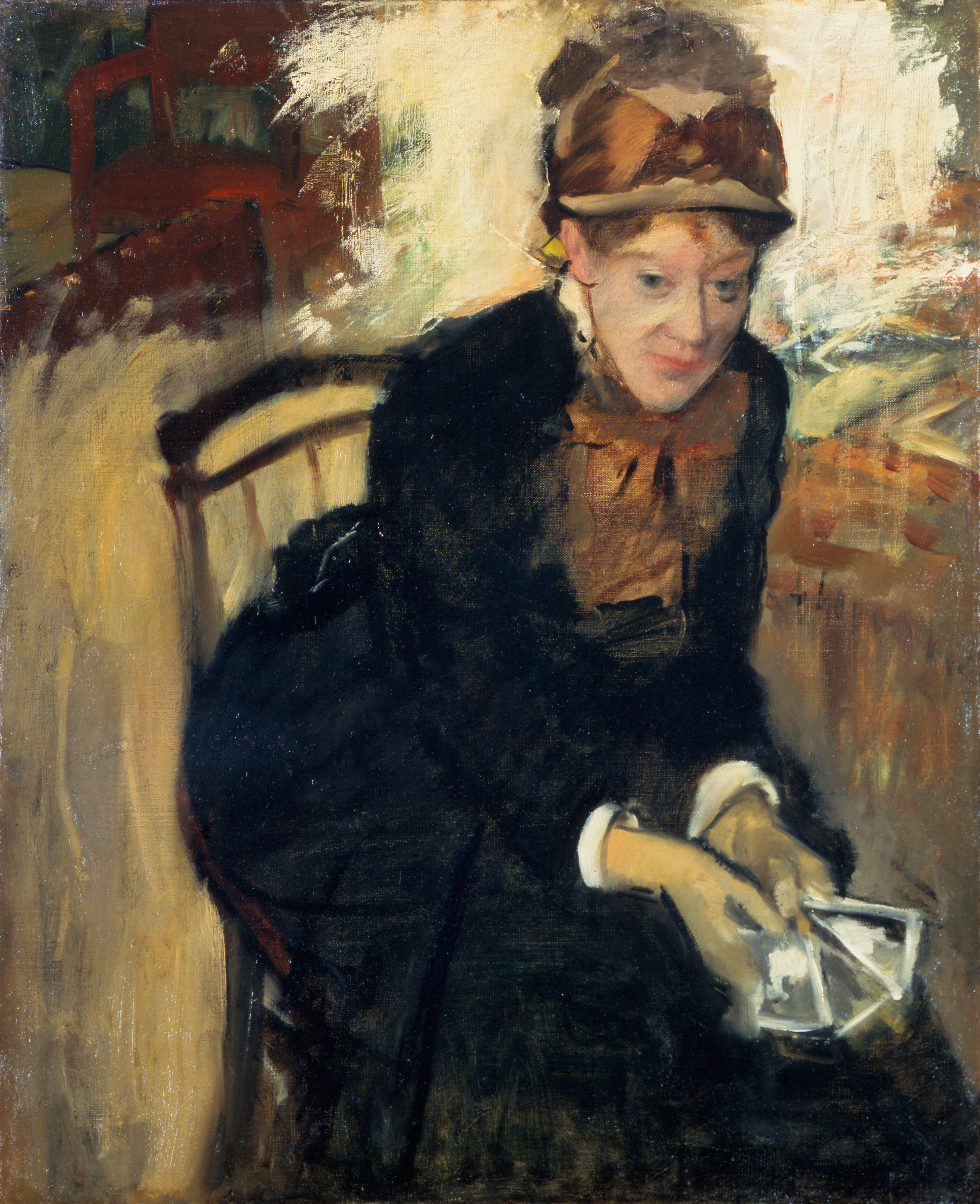 |
| Jon giving his 2013 Caldecott acceptance speech. |
To mix things up, Jon also offered an amusing drawing demonstration midway through the program.Using Photoshop to draw a picture of a turtle, Jon then showed how to create a number of emotions in the turtle, merely by changing just the position and size of the turtle's eyes. It was a great reminder of how the eyes of the big fish are so important in Jon's 2013 Caldecott Medal-winning book, This Is Not My Hat.
Jon finished up his presentation by reading from one of his own favorite books as a kid, In a Dark, Dark Room and Other Scary Stories, retold by Alvin Schwartz. For fans of Jon's work, it was especially interesting to see in those stories the same kind of dry, slightly dark humor that marks Jon's own books.
At our event, Jon just read one story -- "The Green Ribbon" (a classic tale about how the ribbon allows a woman to keep her severed head attached to her body) --and his audience was rapt. And, despite Jon's reminder that he didn't write that story and so couldn't answer questions about it, several young fans kept circling back to it in the Q&A, much to the amusement of both Jon and the audience.
While Jon is relaxed with fans, however, he's a perfectionist when it comes to his work. When I interviewed him in October 2013, for example, he talked about staying awake all night, worrying about the hand-lettering he did for This Is Not My Hat. At the library program, he spoke of his frustration in trying to get the right look for the all-important yarn in the illustrations for Caldecott Honor-winning Extra Yarn, which was written by Mac Barnett. Finally, Jon said, he went out and purchased an inexpensive sweater, scanned it, and then used those scans to create the illustrations.
Jon's newest book, Sam & Dave Dig a Hole, also was written by Mac Barnett. It features Jon's trademark subtle palette, yet he has managed to create an amazing number of different shades and variations on the all-important brown of the dirt dug up by Sam and Dave. In reading the book at the library program, Jon began by urging the audience to notice the title page. Although he noted that title pages are typically "sad" pages because no one pays attention to them, the title page of Sam & Dave Dig a Hole plays a crucial role in the story.
As Jon read the book, the kids in the audience became more and more voluble as Sam and Dave continued to just miss unearthing bigger and bigger gems hidden in the earth's depths. Just as the audience did in our library's recent Caldecott Club reading of Sam & Dave Dig a Hole, these young fans at Klassen's program were audibly disbelieving of how clueless the two boys seemed to be, unlike their dog. Asked later about the fact that Sam and Dave come so close to finding gems, yet never find them, Jon said: "They always miss them because it's funny."
But the biggest surprise of the book comes at the end, when Sam and Dave (and their dog) fall through the hole and then end up in a place that looks like the place they started -- as shown on the title page! -- but clearly isn't exactly the same. Kids notice this fact right away, while it takes most adults longer to see what's happened. As to where Sam and Dave are at the end of the book, Jon left it to his fans to come up with their own ideas. The kids at the library program clearly were intrigued by this challenge, and came up with various suggestions about what had happened.
The wide-open ending of Sam & Dave Dig a Hole also has been a source of much speculation in the children's literature world since the book was published. In a recent post on his 100 Scope Notes blog, for example, Travis Jonker wrote about several different theories about the ending of the book; the theories range from "The Epic Dream Theory" to "It Was All a Dream, Man Theory" and are fascinating to read. Don't forget to also read the comments that follow the post, which offer even more theories, with one commenter pointing folks to a fascinating interview with Jon and Mac about the book on the "Cynsations" blog.
The book clearly is already popular with fans, and many people believe it could earn Klassen yet another Caldecott Medal or Caldecott Honor. The "Calling Caldecott" blog, which focuses on potential Caldecott winners, recently had an interesting discussion about the book.
All too soon, it was time for Jon to head off at the airport. As he went back into our staff area to claim his jacket and backpack, he noticed an unusual "window" there and asked if he could take a photograph. The "window" used to be a real window, but now looks out onto a brick wall. Some time ago, one of our library staffers used construction paper to create a beach scene on the window's bottom half, but the top half still shows the brick wall. It's not something that attracts any attention from most visitors. It takes someone with a special eye, a keen sense of a detail, and a darkly witty sense of humor -- someone, in fact, just like Jon Klassen.
 |
| Me, Jon & my daughter Sally, a Klassen fan. |
END NOTES: Thanks so much to Kerri Poore, children's & teen events coordinator at Politics & Prose Bookstore and Rachel Johnstone of Candlewick Press for bringing Jon to my library. Thanks also to Jon for his memorable presentation. It's not often that you meet such a down-to-earth superstar!










.JPG)
%2Bcopy.JPG)
































